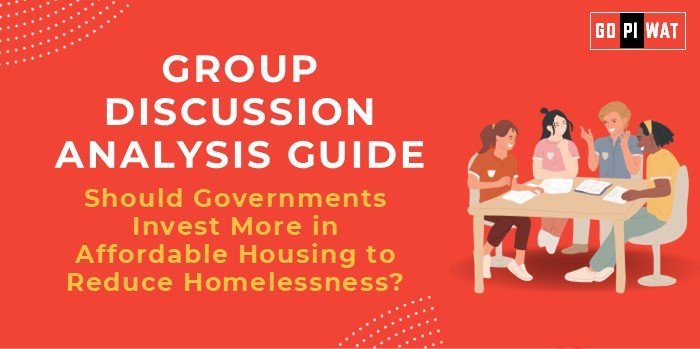📋 Should Governments Invest More in Affordable Housing to Reduce Homelessness?
🌐 Introduction
Context Setting: Globally, homelessness affects millions, presenting an acute social challenge in urbanizing and economically transitioning nations. Affordable housing remains a pivotal solution to this crisis, sparking debates about its viability and priority in government budgets.
Topic Background: Homelessness arises from socio-economic factors, such as rising property prices, unemployment, and lack of welfare. Initiatives like the Housing First program in the U.S. and affordable housing models in Singapore offer significant lessons. Should governments prioritize affordable housing to address homelessness effectively?
📊 Quick Facts and Key Statistics
- 🏠 Global Homeless Population: Over 150 million individuals globally lack stable housing (UN-Habitat, 2023).
- 📈 Affordable Housing Gap: India alone requires 20 million urban housing units to meet demand (MoHUA, 2023).
- 💰 Economic Impact: Every $1 spent on affordable housing in the U.S. returns $2.70 in economic benefits (NLIHC, 2022).
- 📊 Policy Allocation: Developed nations allocate up to 10% of budgets to housing; many developing nations allocate less than 2%.
👥 Stakeholders and Their Roles
- 🏛️ Governments: Formulate policies, provide subsidies, and ensure regulation.
- 🏗️ Private Developers: Partner with governments in public-private ventures to construct affordable units.
- 📢 NGOs and Community Groups: Advocate for rights and provide transitional housing solutions.
- 👪 Citizens: Drive demand, compliance, and community participation in housing programs.
📚 Achievements and Challenges
Achievements:
- ✨ Reduced Chronic Homelessness: “Housing First” initiatives in Finland decreased homelessness by 40%.
- 📈 Economic Revitalization: Affordable housing projects in California generated 29,000 jobs in 2021.
- 🏡 Social Stability: Affordable housing fosters better health, education, and employment outcomes.
Challenges:
- ⚠️ Funding Constraints: Limited fiscal space for housing amid competing priorities like defense or healthcare.
- 🌍 Urban Land Scarcity: Availability of land for housing projects is a key bottleneck.
- ⚖️ Social Segregation: Affordable housing often creates pockets of poverty.
Global Comparisons:
- 🇫🇮 Finland: Effective homelessness elimination strategy through “Housing First”.
- 🇧🇷 Brazil: Challenges in implementing “Minha Casa Minha Vida” due to corruption and funding issues.
🗨️ Structured Arguments for Discussion
- ✅ Supporting Stance: “Investing in affordable housing is a moral and economic imperative, reducing long-term welfare costs and enhancing productivity.”
- ❌ Opposing Stance: “While affordable housing is crucial, immediate investments in job creation and social welfare may yield quicker results in reducing homelessness.”
- ⚖️ Balanced Perspective: “Affordable housing addresses root causes of homelessness but must complement broader socio-economic initiatives.”
🌟 Effective Discussion Approaches
- 💡 Opening Approaches:
- 📊 Highlight the 150 million individuals globally without housing, underscoring the urgency of the issue.
- 🏠 Case study: “Finland’s success in reducing homelessness showcases the transformative power of affordable housing.”
- 💬 Counter-Argument Handling:
- Point: Funding is limited.
- Counter: “Long-term savings from reduced welfare dependence and increased productivity outweigh initial costs.”
📈 Strategic Analysis (SWOT)
- ✅ Strengths: Boosts economy, reduces inequality, fosters health and education improvements.
- ⚠️ Weaknesses: High initial cost, urban land scarcity.
- 🌟 Opportunities: Innovative funding, global partnerships, and sustainable housing designs.
- ⚡ Threats: Economic recessions, policy failures, and social resistance.
🎓 Connecting with B-School Applications
- 🌍 Real-World Applications: Analyze public-private partnership models, study the economic impacts of housing policies.
- 💬 Sample Interview Questions:
- “How would you design a housing policy that balances affordability and sustainability?”
- “Discuss the socio-economic impacts of housing initiatives globally.”
- 📘 Insights for Students: Affordable housing aligns with urban planning, sustainability, and corporate social responsibility themes.


